- Learning time
- 40 minutes
- First play time
- 120 minutes
3 Ring Circus
Designed by: Fabio Lopiano,Remo Conzadori
In 3 Ring Circus, players lead travelling circuses around the USA, raising cash, attracting better performers, and generating fame. In this game fame is recorded in points, and the player with the most points at the end will be the winner.
The board shows a map of the Eastern US and the game handily supplies custom parts to cover parts of the map not in use if you’re playing with only 2 or 3 players (with 4 you used the entire map). At the start of the game players are dealt a hand of money cards, a single performer card, and place their wagon in one of the big cities on the map. The nub of 3 Ring Circus is simple: on your turn you either engage a performer, or put on a show. Hiring a performer is the simple matter of playing a performer into your personal player board – your circus – and paying for them by spending money cards – note however that money cards themselves also double up as performers; just not very good ones. So you can play a money card as a performer, or use it to pay for another performer.
The second option of putting on a show is also pretty straightforward: you can move your wagon to a spot on the map that doesn’t have a circus tent on it yet and perform there, adding a tent of your own. The map is made up of small towns (raising cash) medium cities (cash and attracting new performers to join you) and large cities, for which you’ll need specific performers to put on a circus there at all, but generate both cash and fame.
Every time any player puts on a show, the game’s metaphorical clock ticks toward the end as the non-player circus, Barnum, moves around the perimeter of the board, skipping over any destination that has a tent in it already. When Barnum reaches the big cities he’ll also trigger some bonus scoring for whichever state he’s in, giving fame points (10 and 6 respectively) to the players with the most tents in that state. And when Barnum reaches the city he started in, there’s a final scoring for that state, and then game is over.
So – that’s the nub, but there are layers of complexity around it. Rewards in the cities will vary depending on how many pedestals you have in your circus: you start with a measly one, but can generate more through the addition of performers: each performer has a suit (eg animals, magicians, clowns) and each card supplies a bonus of some kind when you play it. The better performers are worth points at the end of the game: by themselves and/or depending on what other performers you have in your circus. Additionally, where cards go on your board can trigger bonuses: when you cover up a symbol, you take that symbol’s bonus: more cards, move cards around on your board, end-game bonus cards (which can only be played whenever you complete a column on your board). One exception to this extravaganza of possibly-fruitful considerations are the train symbols: the more you cover up on your board, the less far your circus can move on the map, as it grows from nascent clown-and-acrobat combo to a vast procession of visual delights.
The guru's verdict
-
Take That!
Take That!
There's no direct interaction but players may find themselves beaten to the punch on the map, and someone wanting more turns to reach a location and perform there can potentially run out of time to do so.
-
Fidget Factor!
Fidget Factor!
Moderate to high. In essence all you're doing is either putting on a show or improving your circus for the next one, but (see Sam Says) 3 Ring Circus has built a fair amount of complexity into that simple-sounding premise.
-
Brain Burn!
Brain Burn!
In fairness, you can play the game without engaging too strategically in its finer nuances, but doing so is probably where success is going to lie.
-
Again Again!
Again Again!
Lots of variability here, with random decks of money/performers and smaller spinning wheels elsewhere.

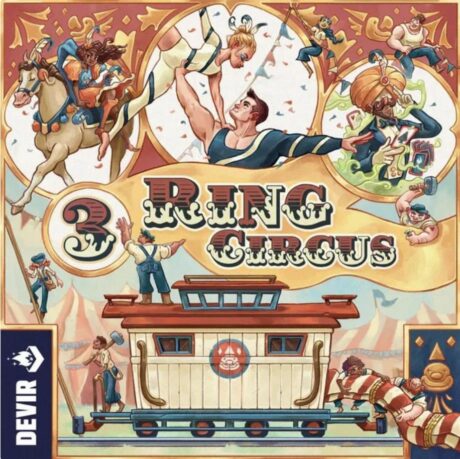
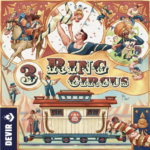
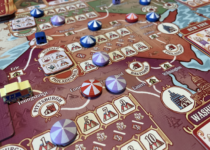
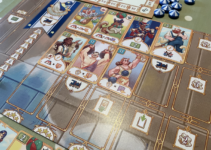
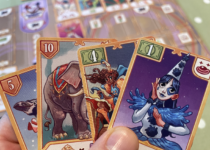


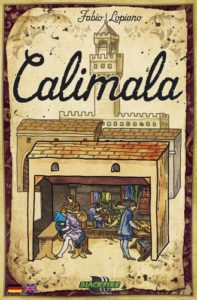
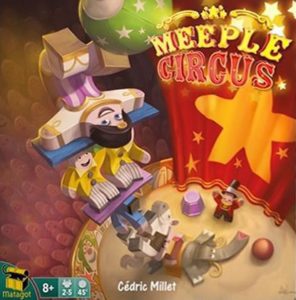

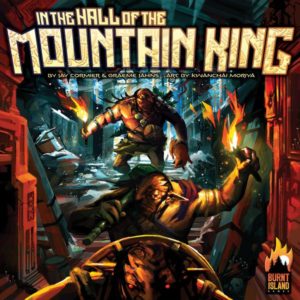
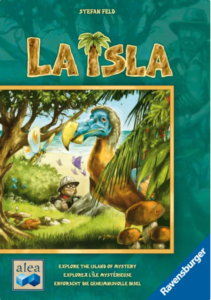
Sam says
How you feel about 3 Ring Circus may well come down to how you feel about its many idiosyncratic adornments. Some will love the intricacies and inbuilt variability hinted at in that last paragraph, but for me personally I think they take a fun game with a strong theme and abstract it into protracted thinkiness. I love the game's simple core of engage or perform and I really like the idea of trying to outdo each other on the map and how Barnum is impelled by the players themselves; he can be deliberately sped up by someone who wants to end the game before another player can generate a big haul of points. But the multiple icons on the player boards, the ways the big cities score, and the way performers are fussy about who performs before and after them just feels like too much: it slows the game down and lets the air out of the very drama other parts of the game are conjuring. All of it's clever, for sure, but is it necessary? I feel like it obfuscates; and dilutes not only the game's setting and story, but the fun as well.